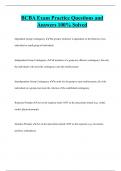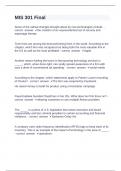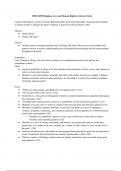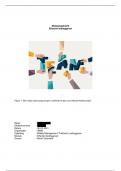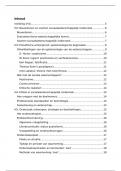Associations between Minority Stress, Resilience, and the Mental Health of Transgender
Individuals: A Systematic Review of Reviews on Socially Produced Mental Health
Disparities
Arnoldina A. Rutten
I6198638
Faculty of Health, Medicine, and Life Sciences, Maastricht University
Bachelor Health Sciences, Mental Health
GGZ3026: Bachelor’s Thesis
Dr Jeffrey Roelofs
July 2, 2021
, 2
Abstract
With awareness of gender diversity increasing, more attention is being paid to transgender
individuals and their social environments. Transgender individuals are likely to experience
prejudice, as their identity does not conform to the traditional social view of gender. The aim
of the current review is to summarize evidence concerning associations between minority
stressors, resilience, and the mental health of transgender individuals. Guided by the minority
stress theory, this review systematically analysed eight reviews that addressed rates and
correlates of mental health issues, experiences of minority stress, and resilience-promoting
factors amongst self-identified and professionally diagnosed transgender participants. The
findings show that the mental health of transgender individuals is poor relative to the
cisgender population. The minority stressors experienced by transgender individuals are
widespread, and research consistently reports a positive association between such experiences
and various mental health problems. This population however may seek resilience-promoting
factors, including trans-specific factors, that could ameliorate minority stressors’ impact on
their mental health. In conclusion, this paper underscores the importance of considering
minority stress and resilience to better understand, protect, and treat the mental health of trans
individuals.
Keywords: transgender, gender dysphoria, minority stress, resilience
, 3
Table of Contents
Gender Dysphoria...................................................................................................................5
Minority Stress Theory............................................................................................................8
Methodology............................................................................................................................10
Eligibility Criteria.................................................................................................................10
Search Strategy......................................................................................................................11
Review Selection....................................................................................................................11
Data Collection and Analysis................................................................................................12
Results......................................................................................................................................14
Characteristics of Included Reviews.....................................................................................14
Results of the Literature Review............................................................................................15
General Overview of Transgender Mental Health.............................................................16
Minority Stress Processes in Relation to Transgender Mental Health..............................18
Resilience-Promoting Factors in Relation to Transgender Mental Health........................21
Discussion.................................................................................................................................25
Limitations.............................................................................................................................31
Recommendations for Future Research and Practice...........................................................32
Conclusion................................................................................................................................34
References................................................................................................................................35
, 4
Associations between Minority Stress, Resilience, and the Mental Health of Transgender
Individuals: A Systematic Review of Reviews on Socially Produced Mental Health
Disparities
In many societies, sex and gender are often converged and perceived as binary with
the two sole categories being male and female (Matsuno & Budge, 2017). The gender binary
system assumes that one’s sex assigned at birth, which is thought to be either male or female,
determines the traits and identity of this individual to be either masculine or feminine,
respectively (Hyde et al., 2019). Despite this being the sociocultural context, sex and gender
are distinct concepts. Sex refers to an individual’s biological status as being either male or
female, whereas gender refers to the attitudes, feelings, and behaviours associated with those
sex categories based on sociocultural stereotypes and norms (Winter et al., 2016).
Furthermore, neither sex nor gender is in fact binary. The process of sex determination is
more complex than initially thought, with research showing that more factors than only the
sex chromosomes X and Y play a role in the development of the biological sex (Ainsworth,
2015). Therefore, sex traits of humans spread across a spectrum of what is thought to
represent typical males and typical females. For instance, disorders of sex development, or
intersex, is a condition involving an atypical development of the chromosomal, gonadal, or
anatomical sex (Hughes, 2008). While this condition is rare, it is one of the various examples
indicating that there is not necessarily a sharp division into two sexes at the level of sexual
morphology. As some individuals do not identify themselves as being either exclusively
woman or man, also known as non-binary, it is clear that also gender is not a binary construct.
Non-binary individuals may identify as being both man and woman, in between the two
traditional gender categories, or neither man nor woman (Richards et al., 2016).
Except for intersex individuals, newborn babies are usually classified as either male or
female on the basis of their external genitalia. Assuming that the newborn babies’ gender is
evident based on their sex, their binary identity assignment determines both how the



